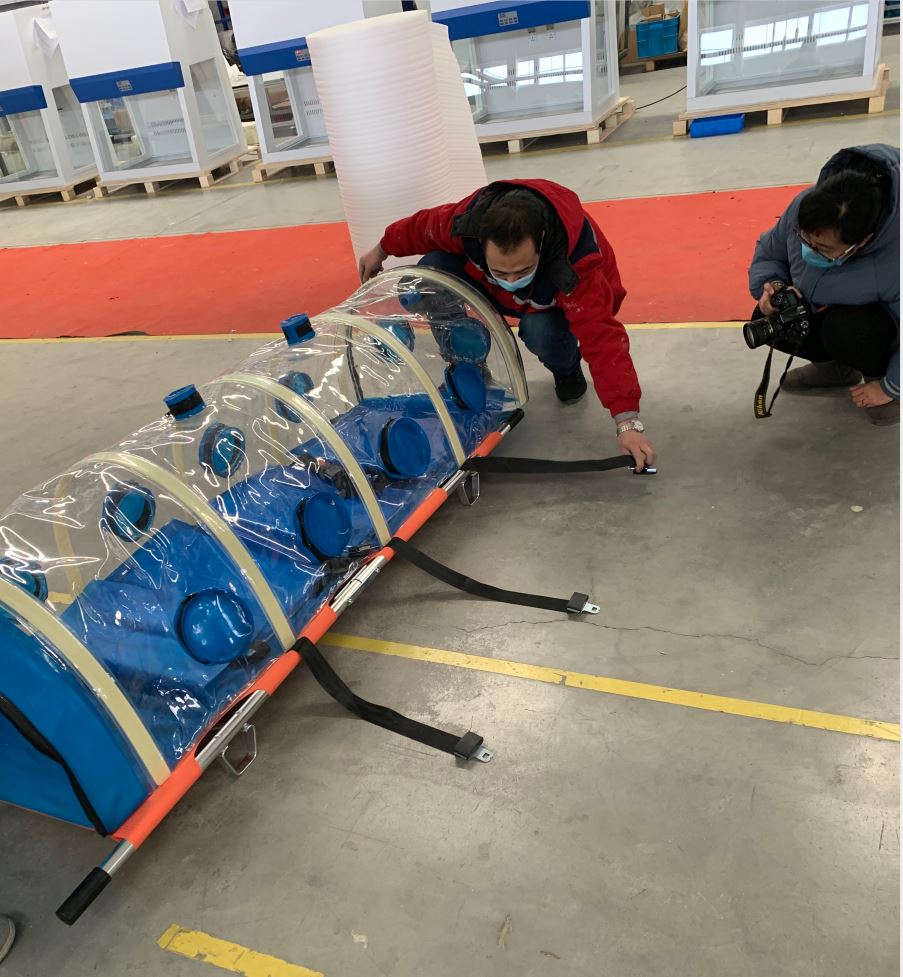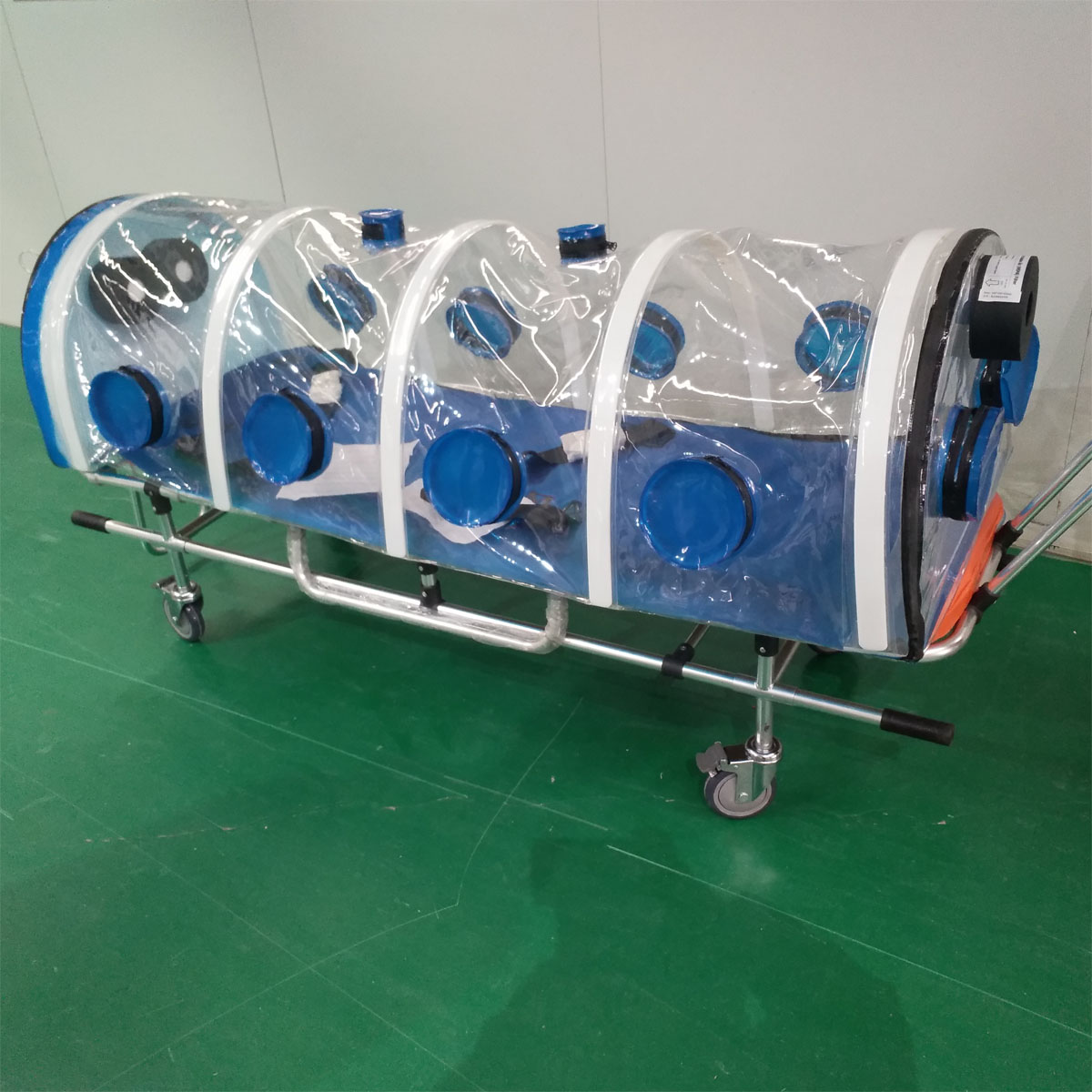Expanded size: 1900 × 680 × 500 (mm)
1. The negative pressure isolation cabin for the transport of infectious patients is to implement a safe isolation and transfer device for new, sudden and highly infectious infectious patients during the transfer process to prevent further spread of pathogens, protect the external environment from pollution, and reduce the infection of healthy public probability.
2. The working principle of the negative pressure isolation cabin for the transport of infectious patients is that the negative pressure generation system is used to establish and maintain the negative pressure environment in the closed cabin. The polluted air in the cabin cannot overflow without purification, thereby providing effective protection for medical personnel; Fresh air can be purified and replenished to the cabin in real time, maintaining reasonable fresh air and oxygen concentrations in the cabin, which can provide a relatively comfortable environment for patients.
3. The cabin is made of high-quality, durable and pollution-free high-strength transparent material, and the cabin is sealed with a waterproof sealed zipper.
4. It is arched by the support rod, 2 oxygen infusion ports for infusion and oxygen infusion for patients; 10 operation ports are attached, and disposable gloves are put on the accessories to facilitate the care and maintenance of patients inside.
5. It can be used with a stretcher to facilitate the movement of patients.
6. During long-term storage, maintenance should be carried out every three months. Power on the test machine for 10 minutes, pay attention to observe the operating conditions, and repair in time if there is an abnormality.
7. Operation steps of transporting negative pressure isolation cabin for infectious patients:
1) Medical staff in protective clothing first open the zipper between the bottom bilge and the cabin of the negative pressure isolation cabin. After the cabin is opened, the patient enters the cabin, pull the zipper, close the cabin, and turn on the fan, 2min Medical staff can then be transported safely or perform other operations.
2) Medical staff can perform simple operations in the cabin through the disposable gloves distributed
3) After arriving at the destination, the medical staff should open the enclosed cabin with protective clothing and remove the patient.
8. The negative pressure isolation cabin for infectious patient transport is suitable for the safe isolation and transfer of infectious patients. Therefore, disinfection procedures should be performed immediately after use. It is recommended to use formaldehyde fumigation and ammonia bicarbonate neutralization for disinfection of infectious patients transporting negative pressure isolation compartments.
9. The total weight of the cabin is no more than 20Kg under no load.
10. With optional stretcher, the load can reach 150Kg.


